The Northern Lights are one of the most wondrous natural spectacles to behold in the U.S. Also known as the Aurora Borealis, the Northern Lights are an astrological phenomenon where shafts of colored light occasionally become visible in the night sky, writes the Library of Congress. This occurs due to ions and atoms being energized as they collide with the atmosphere.
The Northern Lights are visible from many different countries, including Iceland, Sweden, Finland, Norway, Russia, Canada, Greenland, and the U.S.
In some places, such as Alaska or Greenland, the Northern Lights are visible almost year-round. At other locations, there are optimal times of the year to see the Aurora Borealis. Discover the best times and places to see the Northern Lights in the United States.
When Is the Best Time to See the Northern Lights in the U.S.?
In general, the best time to see the Northern Lights in the United States is in the winter months of November through February. During these months, the darker skies and longer nights offer the maximum amount of time for gazing into the sky.
However, some sources suggest that the ideal time to see a spectacular display of the Aurora Borealis is in the early fall and early spring. According to Capture the Atlas, September and March are statistically related to periods of more solar activity.
Discover the World suggests viewing the Northern Lights when they are strongest, between 9 p.m. and 2 a.m. The outlet adds the optimal times are typically around 11 p.m. and midnight.
The 8 Best Places in the U.S. to See the Northern Lights
Most sources seem to agree that fall, winter, and early spring are adequate times to view the Northern Lights. The perfect time may also depend on where exactly you plan to view the light display. Here, we will examine seven amazing places in the U.S. to see the Northern Lights and the best months for each of them.
1. Fairbanks, Alaska
If you want to see the Northern Lights in the U.S., Alaska is one of the best states to visit. The city of Fairbanks lies directly under the “Auroral Oval,” where Northern Light activity is concentrated.
According to Travel Alaska, the Aurora Season in Fairbanks lasts from August 21 through April 21. Visitors who actively scan the sky for a minimum of three nights during this time have a 90% chance of seeing the Northern Lights.
It’s best to look for the colorful display between the hours of 10 p.m. to 3 a.m. Choose a viewing location a few miles away from the city lights and shoot for a clear night with no precipitation.
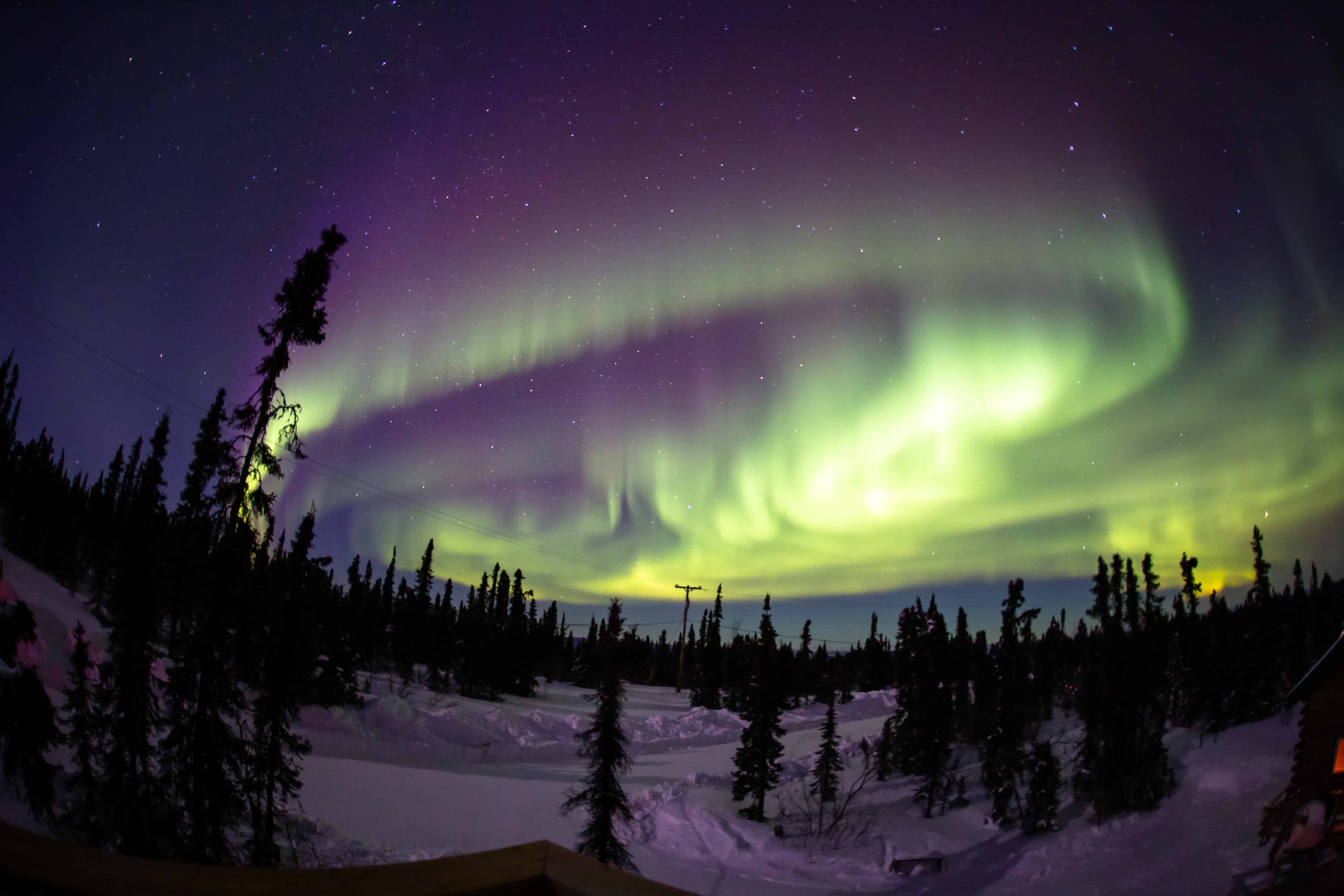
Fairbanks is one of the best places in the United States to see the Northern Lights.
©iStock.com/5279210107801613
2. Priest Lake, Idaho
While Alaska is an incredible place to see the Northern Lights, there are several places to see this wonder within the continental U.S. Located in the Idaho Panhandle, Priest Lake is the best spot in the state to catch a glimpse of the Aurora Borealis.
It’s worth it to travel to northern Idaho for a chance at a glimpse of the Northern Lights. Yet even if you don’t see this spectacle, Priest Lake is a natural wonderland beneath the majestic Selkirk Mountains. Here, visitors can ski, fish, camp, hunt, and more.
Visit Idaho recommends looking for the Northern Lights between the months of September and March. Look for dark, clear skies away from city lights. Evenings with low moonlight (such as the week after a new moon) are ideal. With any luck, you’ll catch a glimpse of the Aurora Borealis in Idaho.
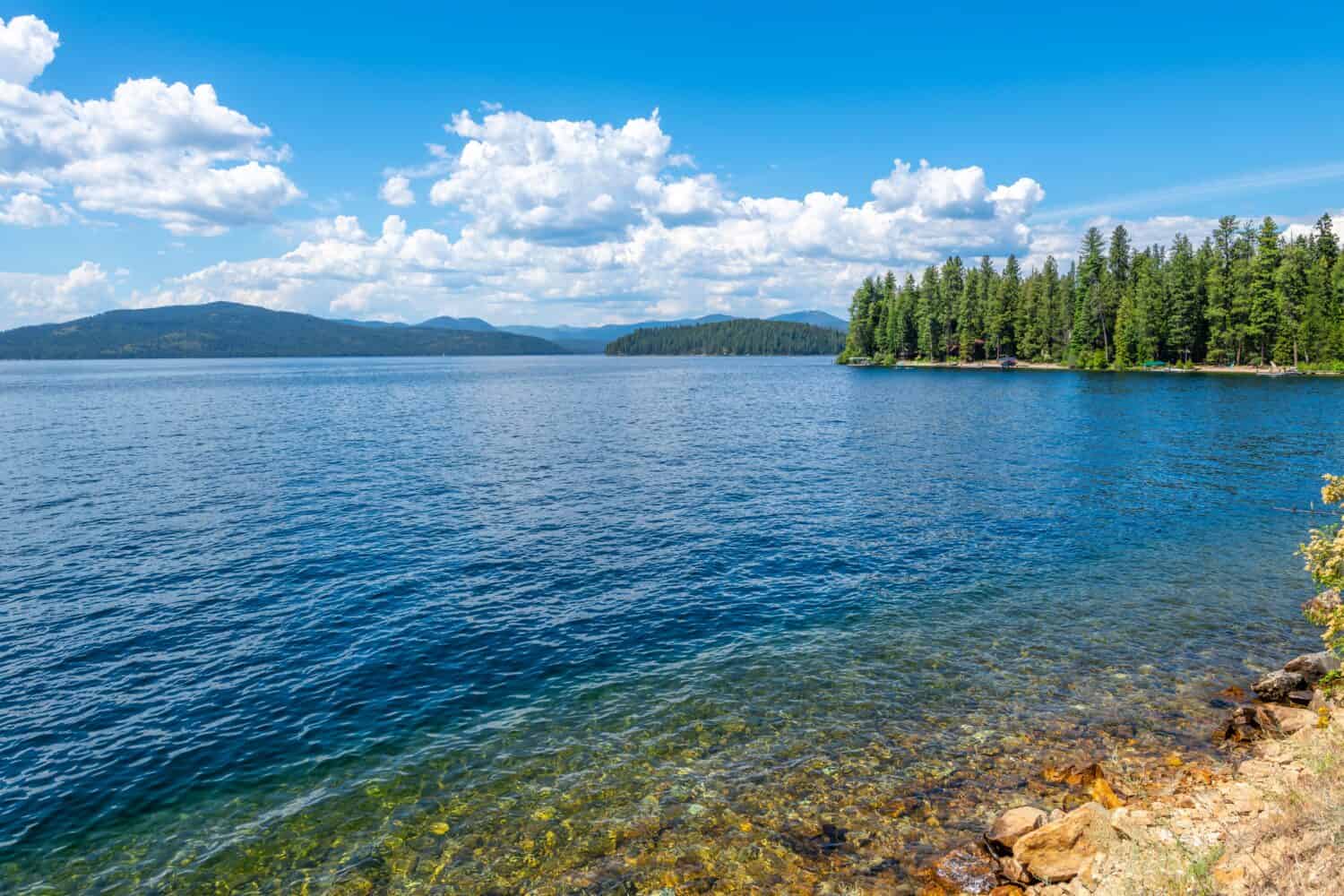
The shores of Priest Lake in the Idaho Panhandle are a great place to catch a glimpse of the Northern Lights.
©Kirk Fisher/Shutterstock.com
3. Aroostook County, Maine
Maine is another state in the continental United States where you can view the Northern Lights. VisitMaine.Net recommends traveling as far north as possible, to the state’s Aroostook County. This region is known for its potato crop, wind power, and outdoor adventures.
To view the Northern Lights in Maine, adventurers need dark skies and clear conditions. Katahdin Woods & Waters National Monument, a certified International Dark Sky Sanctuary, is a perfect option with thousands of acres of powerless property.
Baxter State Park, Acadia National Park, and the Rangeley Lakes Region may also provide views of the Aurora Borealis. Additionally, visitors can try their luck on the banks of Moosehead Lake.
Although the winter months are often recommended as ideal times to see the Northern Lights, that isn’t usually the case in Maine. To see the aurora, you need to have clear skies and Maine’s cloudiest months are November through January. In Aroostook County, give the fall and spring months of October and April a try.
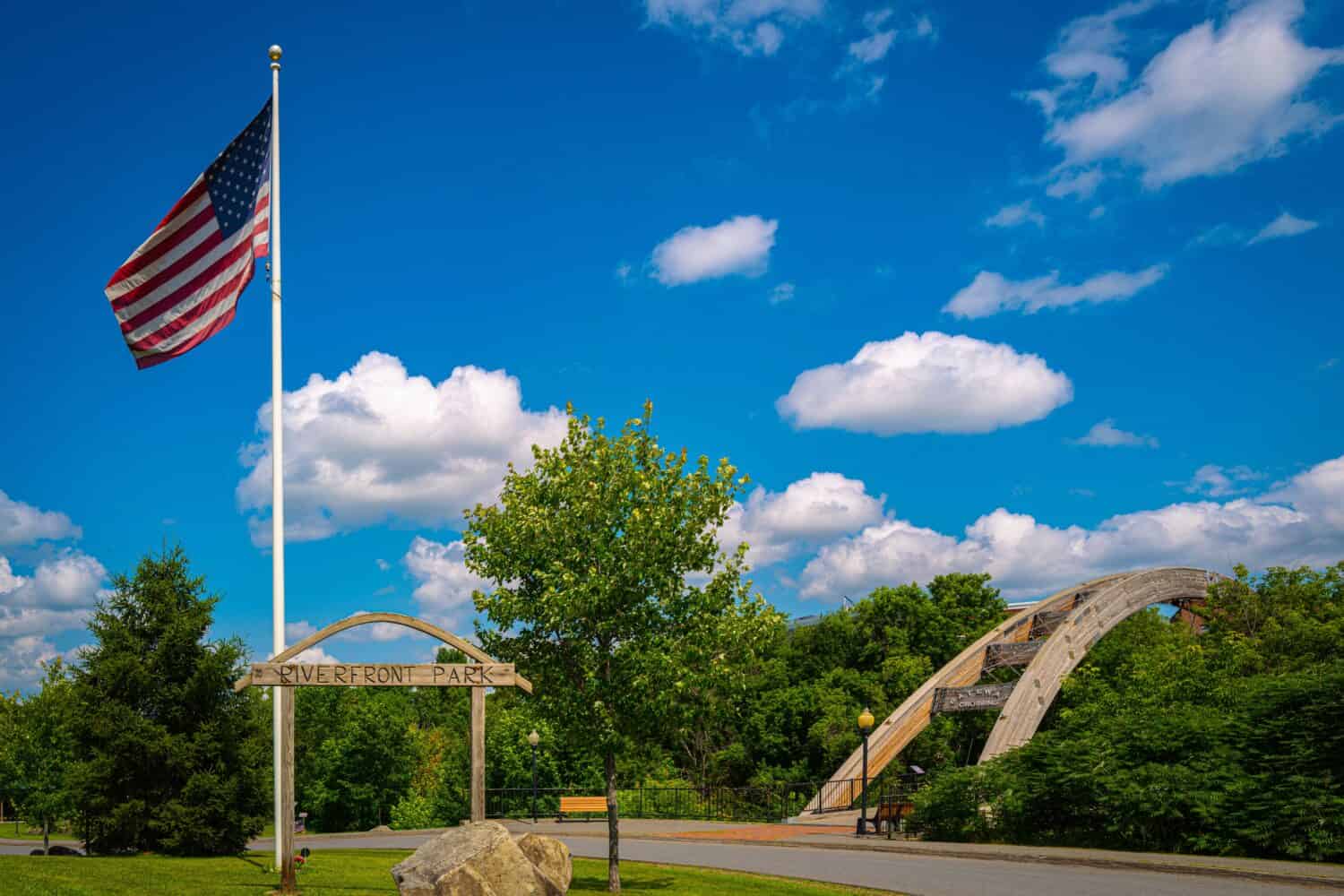
A number of locations in Aroostook County, Maine provide ample opportunity to see the Northern Lights.
©NayaDadara/Shutterstock.com
4. Michigan’s Upper Peninsula
There are multiple places in the state of Michigan to see the Northern Lights. Your best bet is to head to Northern Michigan. According to Pure Michigan, this part of the state is at an ideal location because the auroral oval dips further south on nights of stronger auroral activity.
As we’ve previously discussed, finding an area with minimal light pollution is essential to getting the best view of the Northern Lights. Michigan’s Upper Peninsula contains hundreds of miles of shoreline on Lake Superior.
This is a perfect spot to try to catch a glimpse of the Aurora Borealis as it provides a very dark, unobstructed view of the night sky. Headlands International Dark Sky Park is another spot in Michigan’s Upper Peninsula to get away from light pollution and try to see the Northern Lights.
Like Alaska, the best time of the year to see the Northern Lights in Michigan is between the months of August and April. Some ideal times are the fall months of October/November and the spring months of March/April.

Michigan’s Upper Peninsula provides hundreds of miles of shoreline and clear views of the sky.
©Ayman Haykal/Shutterstock.com
5. Cook County, Minnesota
The best place to see the Northern Lights in Minnesota is in Cook County. The easternmost county in Minnesota, Cook County’s northern location and vast dark skies provide ample opportunity to see the Aurora Borealis.
Visit Cook County Minnesota recommends looking for this spectacle during the late fall and winter. Some websites also offer Northern Lights forecasting, though they can still be difficult to predict accurately.
Prediction sites refer to KP levels, which measure the activity of the Aurora Borealis on a scale from 0-9. To see the lights in Maine, look for an index number of 4 or higher.
For more specific locations in Cooke County to view the Northern Lights, check out the map assembled by Visit Cook County Minnesota.
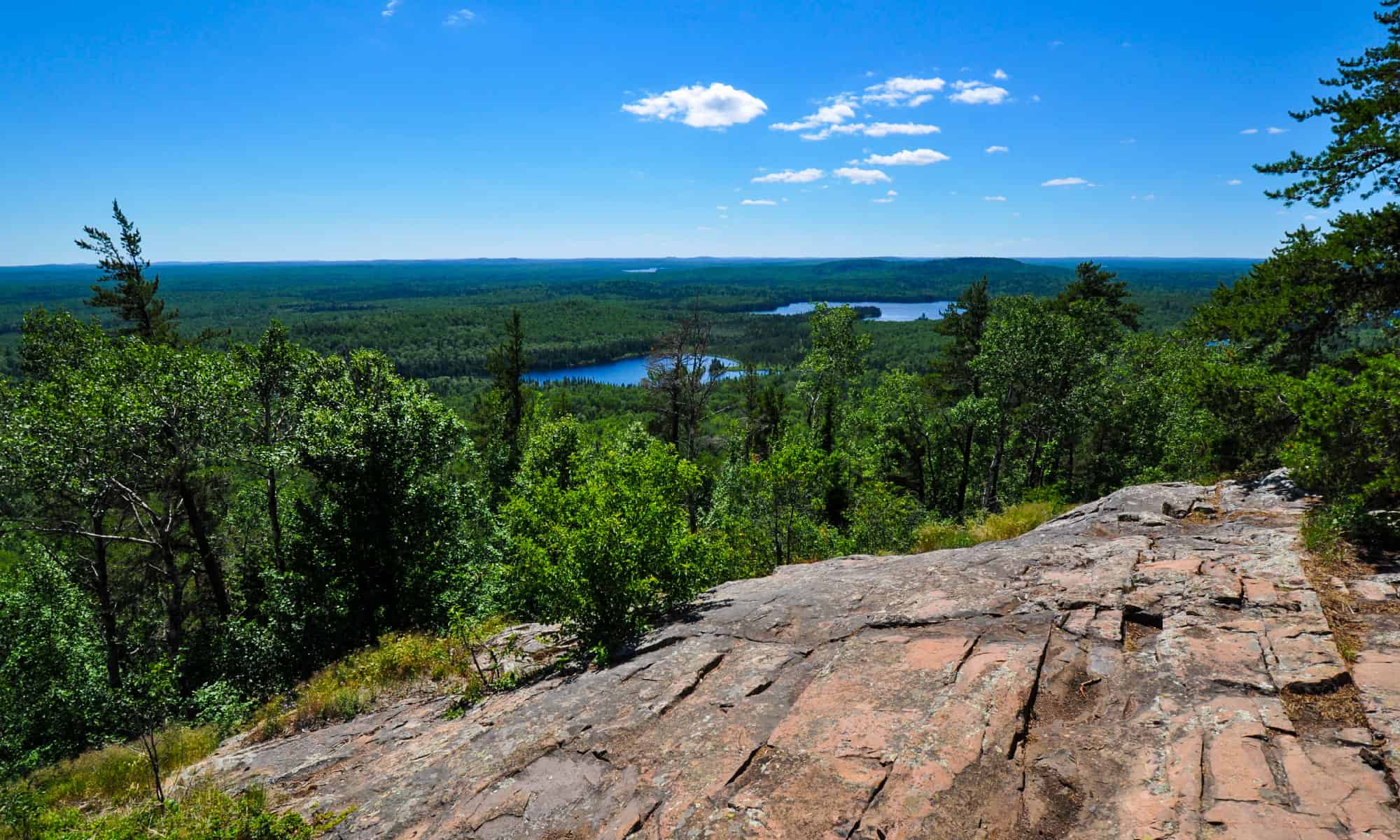
While visiting Cook County Minnesota for a chance to see the Northern Lights, visitors can also summit, Eagle Mountain — the highest point in the state.
©R Kulawiak/Shutterstock.com
6. Theodore Roosevelt National Park, North Dakota
If you’re lucky you might catch a glimpse of the Northern Lights in the state of North Dakota. Follow the advice that this guide has previously stated, such as looking for areas with low light pollution and paying attention to sites dedicated to predicting the Aurora Borealis.
North Dakota is home to Theodore Roosevelt National Park — an incredible location where the Great Plains meet the rugged Badlands. Afar points out that the park is over 30 miles from the nearest large city, Dickinson, so visitors should be able to escape any light pollution.
Even if you don’t manage to see the Northern Lights, Theodore Roosevelt National Park is a worthy destination on its own. During the day visitors can enjoy picturesque hikes, enjoy birdwatching, and catch a glimpse of the area’s ample bison, elk, and prairie dog population.
Afar recommends staying at the farmhouse-style Spirit of the Badlands, where guests may even be able to spot the Northern Lights from the hotel’s decks. Multiple National Park viewpoints are also located not far from the lodging.
Chasing Departures recommends the fall and spring as the ideal times to see the Aurora Borealis in North Dakota. However, the winter months can also provide spectacular views and high visibility of the night sky.

Theodore Roosevelt National Park is home to large and small grazing animals, including bison, elk, prairie dogs, and wild horses
©iStock.com/rruntsch
7. Apostle Islands National Lakeshore, Wisconsin
Another state that provides a view of the Northern Lights in the United States is Wisconsin. Though there are multiple spots in the state to look for the Aurora Borealis, one of the best is the Apostle Islands National Lakeshore.
The Apostle Islands are a group of 22 islands in Lake Superior. With its remote location and minimal light pollution, the Apostle Islands National Lakeshore provides ample opportunity to catch a glimpse of the Aurora Borealis.
Recent reports from Friends of the Apostle Islands National Lakeshore describe a spectacular display of the Northern Lights on March 23, 2023. Executive Director Jeff Rennicke stated, “The Apostle Islands are home to some of the darkest skies in the lower 48 states. On nights like these we should celebrate that fact, and then join together to secure Dark Sky protection for our park so that the lights will never dim.”
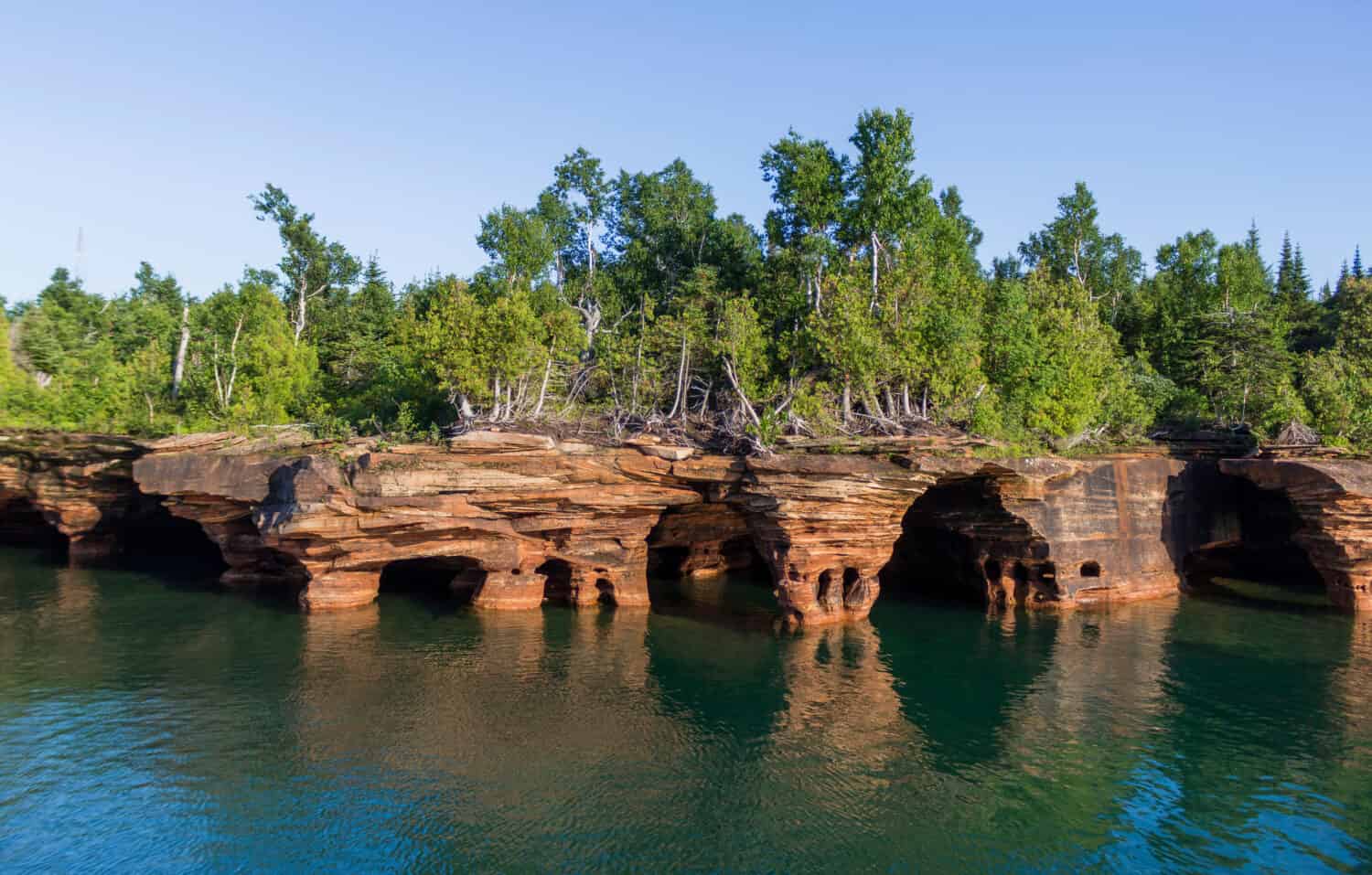
Apostle Islands National Lakeshore is near the Wisconsin shoreline of Lake Superior.
©Gottography/Shutterstock.com
8. Olympic National Park, Washington
Washington is the final state to catch a glimpse of the Northern Lights in the U.S. Located on Washington’s Olympic Peninsula, Olympic National Park includes several different ecosystems, from mountains to old-growth forests.
The Pacific Northwest is known for its frequent clouds and rain, but Olympic National Park is one of the best places in the state for those looking for clear skies to spot the Aurora Borealis.
Look for the lights between midnight and 3 a.m., when the sky is clearest, and keep an eye on the weather and KP levels. Remember that the Aurora Borealis season runs from August to April.
However, the winter months (especially January and February) tend to be the cloudiest in Washington state. For this reason, hunting for the lights in fall or spring might be your best bet.

Though the state of Washington is often under cloud cover, Olympic National Park offers a chance to see the Aurora Borealis.
©A. Gustavson/Shutterstock.com
Summary of the Best Places in the U.S. to See the Northern Lights
| Location | Time of Year |
|---|---|
| Fairbanks, Alaska | August – April |
| Priest Lake, Idaho | September – March |
| Aroostook County, Maine | October and April |
| Michigan’s Upper Peninsula | October/November and March/April |
| Cook County, Minnesota | Late Fall and Winter |
| Theodore Roosevelt National Park, North Dakota | Fall and Spring |
| Apostle Islands National Lakeshore, Wisconsin | September – March |
| Olympic National Park, Washington | Fall and Spring |
The photo featured at the top of this post is © Pi-Lens/Shutterstock.com
Thank you for reading! Have some feedback for us? Contact the AZ Animals editorial team.







